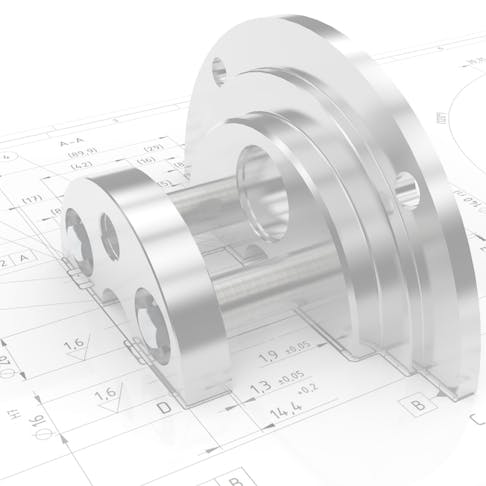
Challenges in Aerospace Innovation in 2019 and Solutions for 2020
Manufacturing for the aerospace industry faced roadblocks in 2019, which slowed the speed of innovation. This article looks at the three biggest challenges engineers in the aerospace industry faced in 2019 and anticipated solutions in 2020.

Manufacturing for the aerospace industry can be a high-risk endeavor since the industry faces stringent requirements. These can have the effect of stifling the speed of innovation. This article will look at some of the challenges engineers in the aerospace industry faced in 2019, and what solutions are anticipated for 2020.
Challenge 1: Capacity Issues
One of the biggest challenges that face aerospace engineers is limited capacity. Aerospace traditionally relies on subtractive manufacturing processes like CNC machining and sheet metal fabrication and, in some cases, injection molding. This industry relies heavily on local manufacturing facilities who are familiar with industry standards and with which they have built lifelong relationships. As aerospace companies scale, engineers often find themselves fighting for local shop capacity, and in turn, increasing the cost as demand increases. These capacity challenges cause delays and increase cost.
2020 Solution to Capacity Challenges
In 2020, these capacity challenges will change as aerospace companies adopt two main ideas: additive manufacturing as a production method and using manufacturing marketplace services. Aerospace has recently invested heavily in hiring additive manufacturing engineers and working to build solutions using 3D printing processes like direct metal laser sintering. Additionally, companies that diversify their supply chains with new manufacturing shops can augment innovation and decrease costs.
In response to capacity challenges found with local manufacturers, more of the top aerospace companies use vetted and qualified manufacturing marketplaces like Xometry. Xometry’s Partner Network provides elastic capacity for sudden, high-volume jobs while consolidating to a single-source vendor.
Challenge 2: Certification Requirements
The second challenge aerospace companies faced in 2019 was sourcing manufacturing shops that were able to meet the lengthy list of certifications and requirements for the aerospace industry. The industry is limited to specific manufacturers because these vendors often must be ITAR registered, AS9100 certified, and in many cases, able to provide material certifications. Not all manufacturers have the financial capacity or desire to gain these requirements, which shrinks the supplier network.
2020 Solution for Certification Needs
In 2020, the aerospace industry’s certification requirements will remain the same. Aerospace companies will still require manufacturers to be AS9100 certified and ITAR registered. For flight-critical components, material certifications will also be a requirement. As more industries implement more requirements—including healthcare—manufacturers will be responsible for getting the certifications to remain competitive. This will bring a necessary industry shift as innovation continues.
Xometry’s online distributed manufacturing service provides greater open capacity with certified shops across the US. Xometry’s Partner quality assurance program also works with qualified manufacturers to elevate their certifications, including ITAR, to grow the available market.
Challenge 3: Material Requirements and Shortage
The aerospace industry designs parts for very high-heat situations—since some of the parts are flight-critical components—that require very specific materials. Magnesium, superalloys, and high-performance plastics like Ultem are common examples. Manufacturing with these materials requires extensive machining experience. Not only does this limit the availability of capable manufacturers, but the material supply often takes longer to procure.
2020 Solution to Low Material Supply
The aerospace industry will always have very specific material requirements, especially for flight-critical components. The materials need to handle lots of pressure and heat, and each has a unique function. As new manufacturing processes are developed, the list of qualified materials will expand. This will allow the aerospace industry to diversify the materials based on parts needs instead of relying on expensive and hard-to-manufacture materials.
Manufacturing platforms like Xometry build in market considerations like supply and manufacturing skill for specialized materials, helping to provide better quotes and expectations upfront on lead time and cost.
To Innovation and Beyond
With aggressive growth in the aerospace sector, including new space systems and increased innovation from top-tier companies, 2019 posed many challenges. 2020, on the other hand, is looking up for aerospace companies. New manufacturing process adoption and the steady increase in certified manufacturing shops will address many of the delays the industry faced this year.
With the use of marketplaces like Xometry, aerospace sector leaders can leverage a supply-chain-in-a-box solution while also empowering hundreds of capable, small business manufacturers with qualified work.
